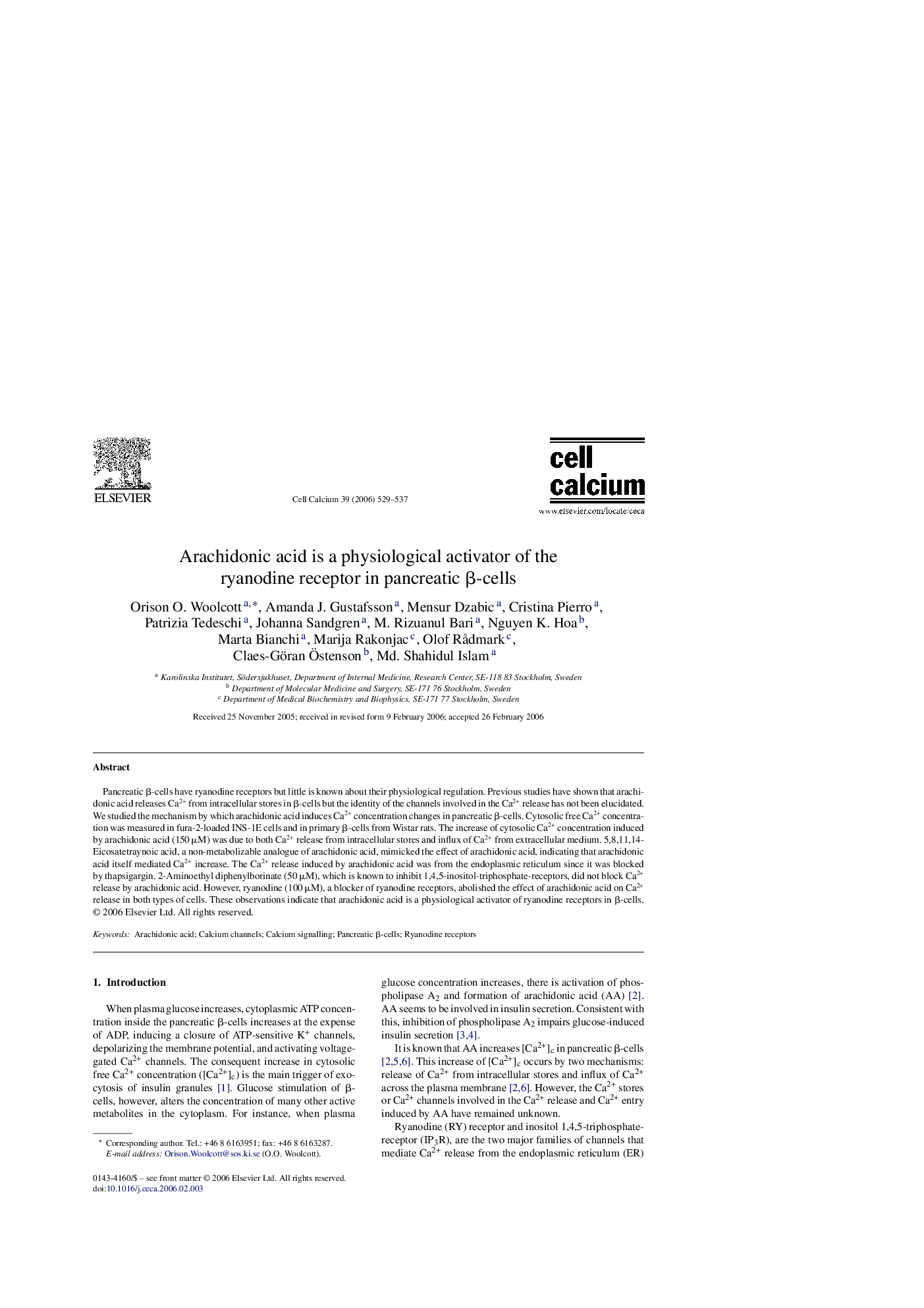| Article ID | Journal | Published Year | Pages | File Type |
|---|---|---|---|---|
| 2166787 | Cell Calcium | 2006 | 9 Pages |
Pancreatic β-cells have ryanodine receptors but little is known about their physiological regulation. Previous studies have shown that arachidonic acid releases Ca2+ from intracellular stores in β-cells but the identity of the channels involved in the Ca2+ release has not been elucidated. We studied the mechanism by which arachidonic acid induces Ca2+ concentration changes in pancreatic β-cells. Cytosolic free Ca2+ concentration was measured in fura-2-loaded INS-1E cells and in primary β-cells from Wistar rats. The increase of cytosolic Ca2+ concentration induced by arachidonic acid (150 μM) was due to both Ca2+ release from intracellular stores and influx of Ca2+ from extracellular medium. 5,8,11,14-Eicosatetraynoic acid, a non-metabolizable analogue of arachidonic acid, mimicked the effect of arachidonic acid, indicating that arachidonic acid itself mediated Ca2+ increase. The Ca2+ release induced by arachidonic acid was from the endoplasmic reticulum since it was blocked by thapsigargin. 2-Aminoethyl diphenylborinate (50 μM), which is known to inhibit 1,4,5-inositol-triphosphate-receptors, did not block Ca2+ release by arachidonic acid. However, ryanodine (100 μM), a blocker of ryanodine receptors, abolished the effect of arachidonic acid on Ca2+ release in both types of cells. These observations indicate that arachidonic acid is a physiological activator of ryanodine receptors in β-cells.
